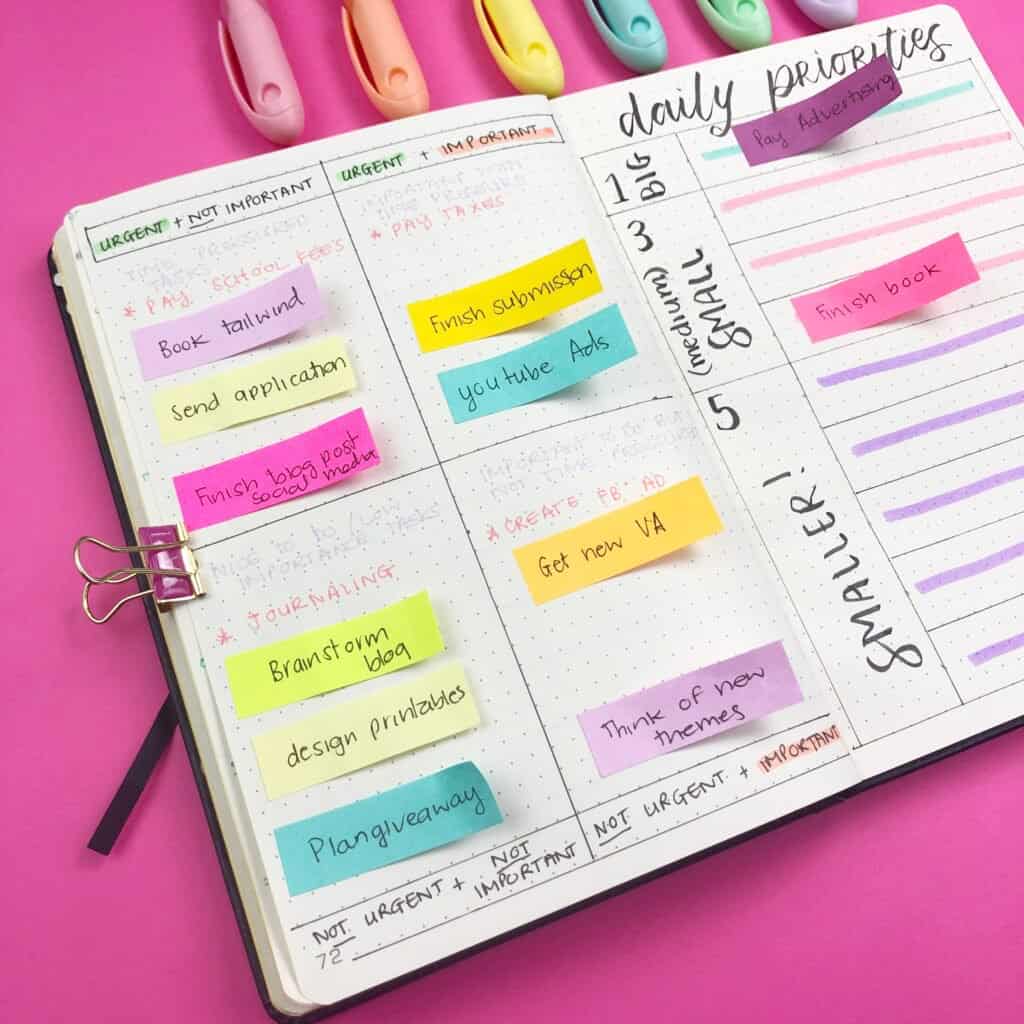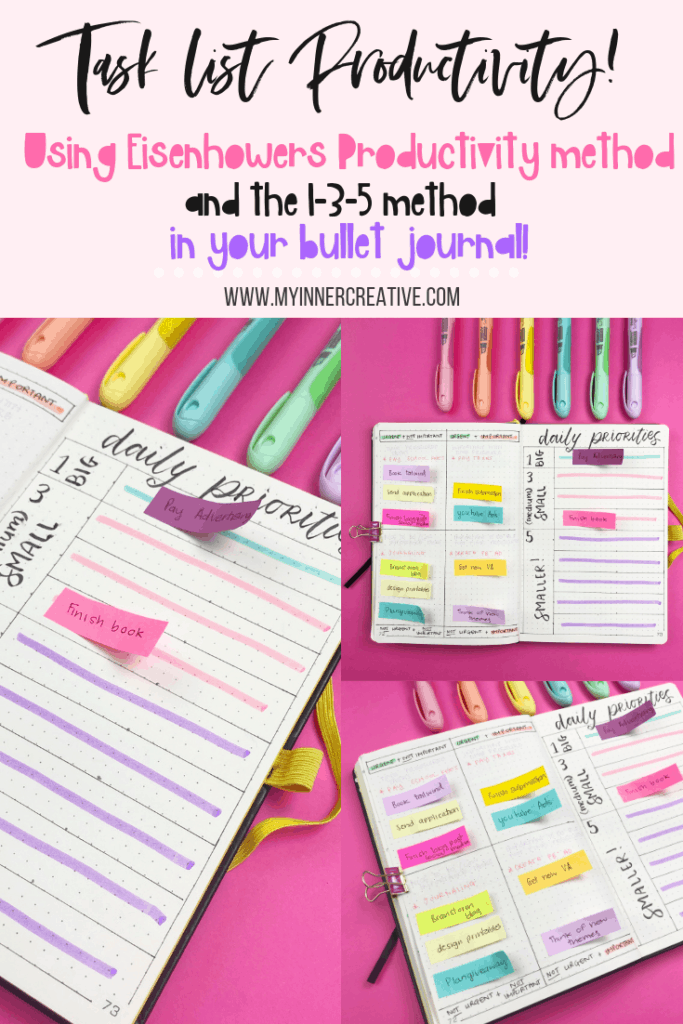Combining the Eisenhower and 1-3-5 Method for productivity to whizz through your tasks!
If you have been using your journal for productivity for a while, then this is a great way to shake things up! You don’t need to much on your “to do list” to get this method going. But it really helps you laser focus the tasks in your month or week. I personally like to use it for my really big chunky to-do items.
I know for me personally I often just write something on my to-do list to cross it off, so I feel like I’ve done something! But that is obviously silly and not needed.
Wanting to see more productivity ideas? Check out all our productivity posts here
So what does Eisenhower, 1 3 5 to-do method for productivity and my to-do list have in common? Me! (Or you if you are reading this!) On any given day I have a pile of things on my to do list – its ok if you don’t – that is the joy of not having a set plan in your journal right, it is totally dependent on your situation, and totally customisable to you!
Let us dig into how we can make the endless to-do list a little more manageable, or even before you get to this point, managing your task list productively.
What is the Eisenhower Principle for Productivity?
Let’s start at the beginning! In a 1954 speech to the Second Assembly of the World Council of Churches, former U.S. President Dwight D. Eisenhower, who was quoting Dr J. Roscoe Miller, president of Northwestern University at the time, said: “I have two kinds of problems: the urgent and the important. The urgent are not important, and the important are never urgent.”
This is essentially how he organised his priorities, and making a safe assumption, a president knows about priorities right? He saw time management and effective task management, as an efficient way to get things done. The idea was then popularised by Stephen Covey in the Book 7 habits of highly effective people. To be able to distinguish between those Important and Urgent tasks, we define them as:
Important activities have an outcome that leads to us achieving our goals, whether these are professional or personal.
Urgent activities demand immediate attention, and are usually associated with achieving someone else’s goals. They are often the ones we concentrate on and they demand attention because the consequences of not dealing with them are immediate.
So the Important/ Urgent list then became the following frame work
Things that were Important AND Urgent take top priority;
Things that are Important BUT NOT urgent take second priority
Things that are Not Important BUT ARE urgent take third and coming in last is
Not Important and Not Urgent
Examples: Q1
Here are a few specific examples of Urgent and Important tasks:
Quadrant 1 tasks are both urgent and important. They’re tasks that require our immediate attention and also work towards fulfilling our long-term goals and missions in life.
Q2 examples:
Q2 tasks are typically centered around strengthening relationships, planning for the future, and improving yourself.
Q3 Examples:
Quadrant 3 tasks are activities that require our attention now (urgent), but don’t help us achieve our goals or fulfill our mission (not important). Most Q3 tasks are interruptions from other people and often involve helping them meet their own goals and fulfill their own priorities.
Q4 Examples:
Quadrant 4 activities aren’t urgent and aren’t important. They’re what I like to call “messing around” activities. Q4 activities aren’t pressing nor do they help you achieve long-term goals or fulfil your mission. They’re primarily distractions.

How do I define the categories?
You can easily ease the pressure of the “Urgent” category by doing a bit of pre-planning every month, and making sure you are ahead of the tasks coming up. Unavoidable tasks that are urgent sometimes crop up but it means you can priorities these quickly.
What is the 1-3-5 Method?
By setting an intentional “What will I achieve today” you can really help focus your to-do list and create space to achieve those bigger things! For these bigger things I do like having them over a Week, but it could change to daily depending on what the task might be.
In summary the 1-3-5 method gets you to focus on accomplishing 1 big thing, 3 medium things and 5 small things – narrowing down your task list to only 9 things. Like with everything this method is flexible and I find that if I am filled with meetings, I set my big task for a week rather than a day, or if I know some additional tasks are coming my way I leave some spaces blank to address that.

How do I use Eisenhower and 1-3-5 Method together?
This is where I have found the magic happening! By using the Eisenhower priorities method, I am able to list my priorities. From here I can now take the meatiest one and pop it into my #1 Big task bucket!
From here I can pick 3 moderately important next priorities to focus on and finally 5 small ones that I can knock out the park quickly!
I use small sticky notes to capture all my current tasks and place them into the quadrants. From there, I manage look at what is in the time critical quadrants and place them into the 1 and 3 sections of my priorities list!
I then pick 5 smaller tasks to complete in my small list. Everything else can either wait or be dealt with after the first 9 are done.

Let me show you my 1-3-5 productivity technique!








